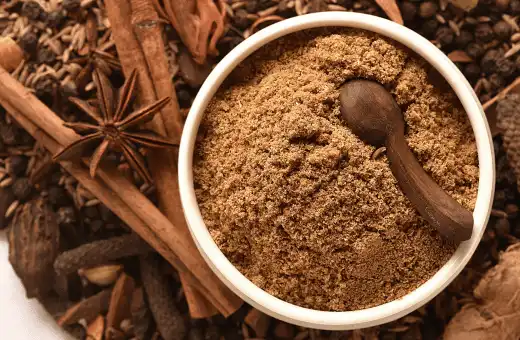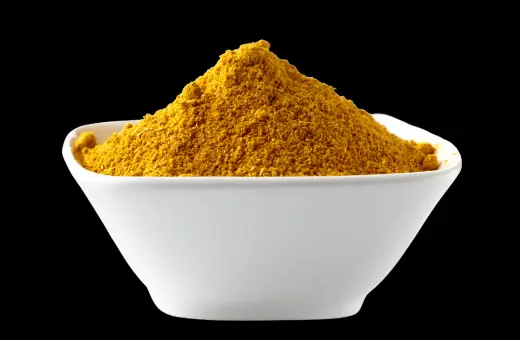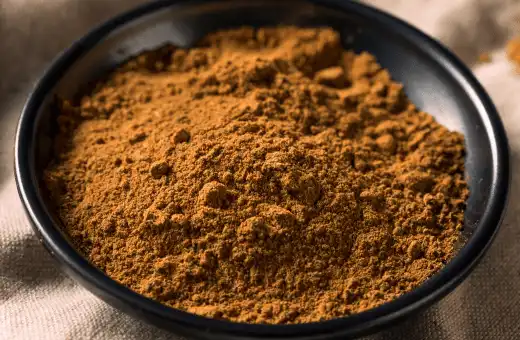Ras el hanout is a complicated North African spice blend commonly used to season couscous, tagines, and grilled meats.
It contains many different spices, typically including cumin, cardamom, mace, ginger, and dried onion.
While ras el hanout adds incredible flavor and depth to dishes, there are some recipes where it may not be available or appropriate.
Substituting Ras el Hanout can prove tricky, but fear not, as I am a chef and have lots of experience in substitutions and alternatives for spice blends.
Here are 10 of the finest substitutes for ras el hanout, with instructions on how to use them.
Keep reading to find out my favorite Substitutes for Ras El Hanout that will add the flavor you desire to your dishes.
In short, " What can I use instead of ras el hanout?" Garam Masala, Baharat, Curry Powder, Harissa, Homemade Ras el Hanout, Chinese Five Spice, Sumac and Cumin, Za'tar, Jamaican Jerk Seasoning.
What is ras el hanout, and what does ras el hanout taste like?
Ras el hanout is a spice mixture from North Africa, particularly popular in Moroccan cuisine. Its name means “head of the shop” in Arabic, and it represents the best spices a seller has to offer.
It’s a complex blend, and the exact composition can vary significantly from one shop or family to another, or even from day to day, depending on what’s available.
The flavor of Ras el Hanout is warm, slightly sweet, and deeply aromatic.
It has a somewhat complex taste with layers of warming, sweet, and savory flavors and hints of floral notes depending on the specific mix.
What is Ras el Hanout spice made of?
Common ingredients often include cardamom, cumin, clove, cinnamon, nutmeg, mace, allspice, dry ginger, chili peppers, coriander seed, peppercorn, sweet and hot paprika, fenugreek, and dry turmeric.
Some variations might contain over 30 different spices. Occasionally, more exotic ingredients like dried rosebuds, fennel seed, or even Spanish fly are included.
The heat level can differ depending on the number of chili peppers included, but generally, Ras el Hanout is more focused on its aromatic and savory qualities rather than heat.
It’s used in various dishes, like tagines, couscous, rice dishes, and soups, and is often rubbed on meat before roasting or grilling.
Uses of ras el hanout
Ras el hanout is a type of North African spice blend, and it can be used to dress up salads and couscous dishes as well.
Ras el hanout has many uses in sweet dishes as well; try adding it to muffins, cakes and scones for an exotic twist.
It also makes an interesting addition to hot drinks like tea or coffee; simply add a pinch of the blend with your regular sweetener for an exotic sweet-spicy beverage.
For health-conscious cooks, ras el hanout can be a great technique to add flavor without adding fat or calories.
Its unique flavor adds zing to steamed vegetables and grains like rice and quinoa without needing additional condiments or seasonings.
Where to buy ras el hanout?
If you are looking for ras el hanout where to buy, there are a few other places you can go. Many specialty food stores carry it, as do some international grocery stores.
You can also order online from many retailers that provide a variety of diverse flavors and types of ras el hanout.
Best substitutes for ras el hanout
1. Garam Masala – A great substitute for ras el hanout

Garam Masala is a spice mixture from India and contains multiple of the same ingredients as Ras el Hanout.
The only difference is that Garam Masala tends to lean into the sweeter side, with Spices such as cinnamon and cardamom being the more pronounced flavors.
While Ras el Hanout lends a more slightly bitter, earthy, and pungent taste profile.
As an alternative, try using Garam Masala and add a little turmeric and cumin to make the resemblance closer to Ras el Hanout spice profile.
2. Baharat – similar to ras el hanout
Baharat is a popular Arabic blend with many ingredients used to make Ras el Hanout, including cinnamon, coriander, cardamom, and cumin.
However, unlike Ras el Hanout, Baharat tends to have a more prominent taste of sweet paprika, resulting in a sweeter and warm flavor.
Although Baharat is not a direct substitute for Ras el Hanout, it would make a delicious alternative spice blend.
3. Use Curry Powder to replace ras el hanout

With its similarities to Garam Masala and Baharat, Curry powder is an excellent alternative for Ras el Hanout.
This spicy and robust blend works well in Moroccan and Tunisian cuisine and adds an exotic depth of flavor to the dishes.
Curry powder generally has coriander, cumin, ginger, turmeric, and chili powder, making for a slightly pungent and sour flavor that is ideal when looking for a quick replacement for Ras el Hanout.
4. Harissa – similar to ras el hanout
Harissa is a spice paste often used in North African cuisine and is made from spicy chili peppers, garlic, and different spices such as coriander, caraway, and cumin.
It’s most similar to Ras el Hanout’s flavor profile, albeit with more emphasis on the spicy side. As such, it is an excellent substitute for Ras el Hanout in all its recipes.
To use, simply add one teaspoon of Harissa per one teaspoon of Ras el Hanout, and you’ll achieve an almost identical flavor profile.
5. Homemade Ras el Hanout – A tasty alternative for ras el hanout
When all fails, and you want to maintain the authentic flavor profile of your dish, make some Ras el Hanout yourself.
You only require a few ingredients, such as coriander, cinnamon, ginger, cloves, fennel seeds, paprika, cumin, and cardamom.
Then, all you maintain to do is blend them together in equal proportions.
Making your Ras el Hanout blend from scratch guarantees a fresher and bespoke blend to suit your unique preferences, and you can decide to leave it out or add more spices to make it your own.
6. Chinese Five Spice – similar to ras el hanout

This combination of five aromatics—star anise, Szechuan pepper, cassia bark (similar to cinnamon), cloves, and fennel—offers a similar flavor profile as ras el hanout with its peppery-spicy notes.
Use it in small amounts as a substitute for ras el hanout when seasoning poultry or fish dishes.
7. Sumac and Cumin – similar to ras el hanout
When substituting ras el hanout in marinades or rubs for grilling or roasting meat dishes such as lamb or beef kebabs, mix ground sumac powder with ground cumin in equal proportions for a tart-spicy taste analogous to the flavors of ras el hanout blend.
8. Za’tar – A decent replacement for Ras el Hanout
A Middle Eastern blend that consists of thyme along with other spices such as oregano sumac, sesame seeds, salt and sometimes marjoram.
Use za’atar in equal proportions as a replacement for ras el hanout when seasoning hummus falafel tabouleh salads, tahini dips or roasted vegetables.
9 . Jamaican Jerk Seasoning – similar to ras el hanout

A hot-and-spicy mix that also has some sweetness from allspice plus garlic, onion thyme, cinnamon nutmeg, scallion brown sugar, paprika, black pepper, cayenne pepper, clove powder, bay leaves, ginger.
Use jerk seasoning in equal portions to substitute for Ras al Hanout when preparing shrimp, fish, pork, beef, chicken wings or vegetables.
How to Choose the Most Suitable Substitution Option for Ras el Hanout
Ras el hanout is a spice mixture from North Africa, particularly Morocco, and it’s used to flavor many types of dishes.
The specific ingredients can vary, but it often includes cardamom, clove, cinnamon, ground chili peppers, coriander, cumin, peppercorn, paprika, fenugreek, and turmeric.
If you’re unable to find this seasoning blend, here are some tips for creating a substitute:
1. Determine the Key Flavor Profiles: Look at the recipe you are using to identify the key flavors. Different recipes may emphasize different spices, but usually, the main components of Ras el Hanout are coriander, cumin, and cinnamon.
2. Review Your Spice Cabinet: Once you know the key flavors you’re trying to replicate, check to see what you have on hand. You may already have multiple ingredients in your spice cabinet.
3. Make Your Own Blend: To mimic the taste of Ras el hanout, you can create your own blend of spices.
An easy substitute can be a blend of equal parts ground cumin, ground ginger, ground turmeric, and ground cinnamon, with a dash of black pepper. Add a little clove, nutmeg or allspice if you have them on hand.
4. Use Garam Masala: Garam masala, an Indian spice blend, has similar warming spices like cumin, coriander, and cinnamon. It may not be identical, but it should give your dish a similar depth of flavor.
5. Consider Curry Powder: If you don’t have garam masala, curry powder can also work as a substitute. It contains many of the same spices. Just be cautious of the amounts you use, as curry powder can have a stronger flavor.
6. Add Some Heat: Ras el Hanout typically has a bit of heat to it. You can replicate this by adding a small quantity of cayenne pepper or crushed red pepper flakes to your spice blend.
Remember, these tips are just a guide. Feel free to modify the amounts to suit your tastes. The beauty of Ras el Hanout, and spice blends in general, is that they can be tweaked to personal preference.
Discover more: Best Red pepper flakes substitutes
Conclusion on substitutes for Ras el Hanout
In conclusion, substituting Ras el Hanout may prove tricky, but there are still alternatives that you can use and still achieve the distinctive flavors that the blend provides.
From using Garam Masala to Harissa, Curry powder, and Baharat, each alternative spice blend brings its own unique twist to your dish and enhances your culinary experience.
However, always remember making your variation of Ras el Hanout guarantees authentic flavors that complement any North African, Moroccan, or middle eastern cuisine while giving you the freedom to create bespoke flavor combinations that cater to your unique taste.
FAQs on substitutes for ras el hanout
Q1. What spice mix is similar to Ras el Hanout?
Texas-style chili powder, Mexican mole and Caribbean curry powder are all seasonings that share some similarities with Ras el Hanout.
All of these spices have a combination of sweet, savory and spicy flavors that can enhance the flavor of various dishes.
Texas-style chili powder includes cumin, garlic, onion, oregano and red pepper flakes, while Mexican mole is made up of chili peppers, cinnamon, sesame seeds and other herbs and spices.
Caribbean curry powder typically consists of coriander, turmeric, cumin and fenugreek, as well as other herbs and spices that provide it its signature flavor.
Q2. Can I use garam masala rather of Ras el Hanout?
Yes, you can use garam masala rather of Ras el Hanout. Both spices contain similar ingredients, such as cumin, coriander, fennel and chili peppers.
However, the ratios of each spice, along with other ingredients such as cardamom and nutmeg, differ between the two. Garam masala is usually a bit spicier than Ras el Hanout, which is often used for its milder flavor profile.
Additionally, Ras el Hanout typically contains more herbs and flowers that provide both flavor and color. For this reason, some may prefer it for dishes that require a deeper flavor or an exotic touch.
Q3. Is ras el hanout like curry powder?
Yes, ras el hanout is similar to curry powder in that it is a blend of spices and herbs used in North African cooking.
However, the blend of spices and herbs used varies according to region, so each ras el hanout has its own distinct flavor profile. Some versions may feature mild flavors, while others will be more spicy or pungent.
Q4. What can I use if I still need Moroccan seasoning?
If you don’t have Moroccan seasoning, you can create a similar flavor profile by blending together equal parts ground cumin, coriander, ginger, cinnamon, pepper, and turmeric.
A pinch of cardamom or nutmeg would add some complexity to the blend as well. Alternatively, you can purchase a pre-made.
North African Spice Blend, which typically contains some combination of these spices as well as others like garlic powder and paprika. These blends are also available in stores such as Whole Foods and specialty spice stores.
Q5. Can i substitute ras el hanout for harissa
Yes, you can substitute ras el hanout for harissa in certain recipes.
Ras el hanout is a popular North African spice blend that typically includes turmeric, cumin, cardamom, pepper, coriander, cinnamon and nutmeg.
It has a warm and little sweet flavor with notes of citrus and adds a depth of flavor to dishes like couscous or tajines.
Harissa is a spicy chili paste made with smoked chilies, garlic, herbs and spices such as cumin, caraway and coriander.
Its heat level varies greatly depending on the type of chili used. Both ras el hanout and harissa are great options for adding complexity to dishes because they’re packed with different aromatics and flavors.
Depending on the recipe or your preference, you could use either one to add some heat or depth of flavor to your dish.
Q6. Can I substitute Baharat for ras el hanout?
Yes, you can substitute Baharat for Ras el Hanout. Both are Middle Eastern spice mixes that include a variety of spices, though the exact proportions and ingredients may vary.
Ras el hanout typically includes a higher proportion of warm spices such as cumin, coriander and cinnamon, while baharat is more likely to contain black pepper, allspice, nutmeg and cardamom.
Both have savory flavor profiles with notes of sweetness from added sugar or honey. You can adjust amounts to taste when substituting one for the other in recipes.

